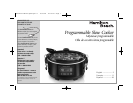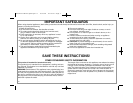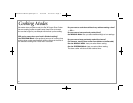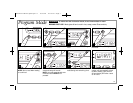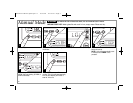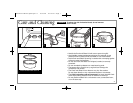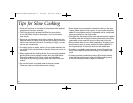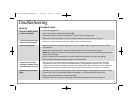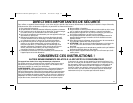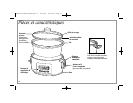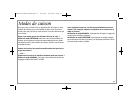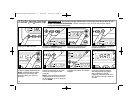
Tips for Slow Cooking
• Foods will continue to increase in temperature after desired
temperature has been reached.
• The Crock should be at least half-filled for best results.
If only half-filled, check for doneness 1 to 2 hours earlier
than recipe.
• Stirring is not necessary when slow cooking. Removing the
glass lid results in major heat loss and the cooking time may
need to be extended. However, if cooking on High, you may
want to stir occasionally.
• If cooking soups or stews, leave a 2-inch space between the
top of the Crock and the food so that the recipe can come to
a simmer.
• Many recipes call for cooking all day. If your morning schedule
doesn’t allow time to prepare a recipe, do it the night before.
Place all ingredients in the Crock, cover, and refrigerate
overnight. In the morning, simply place the Crock in the slow
cooker.
• Do not use frozen, uncooked meat in the slow cooker.
Thaw any meat or poultry before slow cooking.
• Some foods are not suited for extended cooking in the slow
cooker. Pasta, seafood, milk, cream, or sour cream should be
added 2 hours before serving. Evaporated milk or condensed
soups are perfect for the slow cooker.
• The higher the fat content of the meat, the less liquid is needed.
If cooking meat with a high fat content, place thick onion slices
underneath so the meat will not sit on (and cook in) the fat.
• Slow cookers allow for very little evaporation. If making your
favorite soup, stew, or sauce, reduce the liquid called for in
the original recipe. If too thick, liquid can be added later.
• If cooking a vegetable-type casserole, there will need to be
liquid in the recipe to prevent scorching on the sides of the
crock.
• To keep previously cooked food warm (food that is already
at the desired temperature), select the Warm setting in any
of the two cooking modes: Program or Manual.
8
840161403 ENv04.qxd:Layout 1 12/23/09 12:16 PM Page 8



